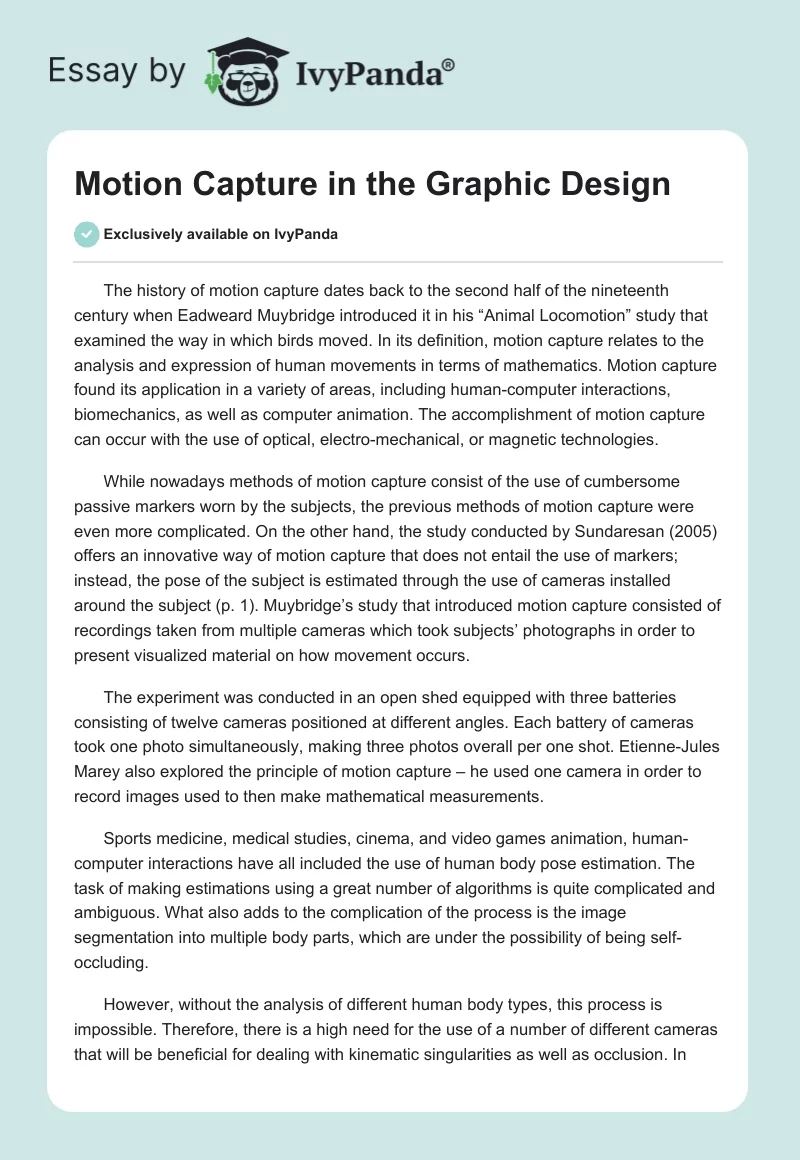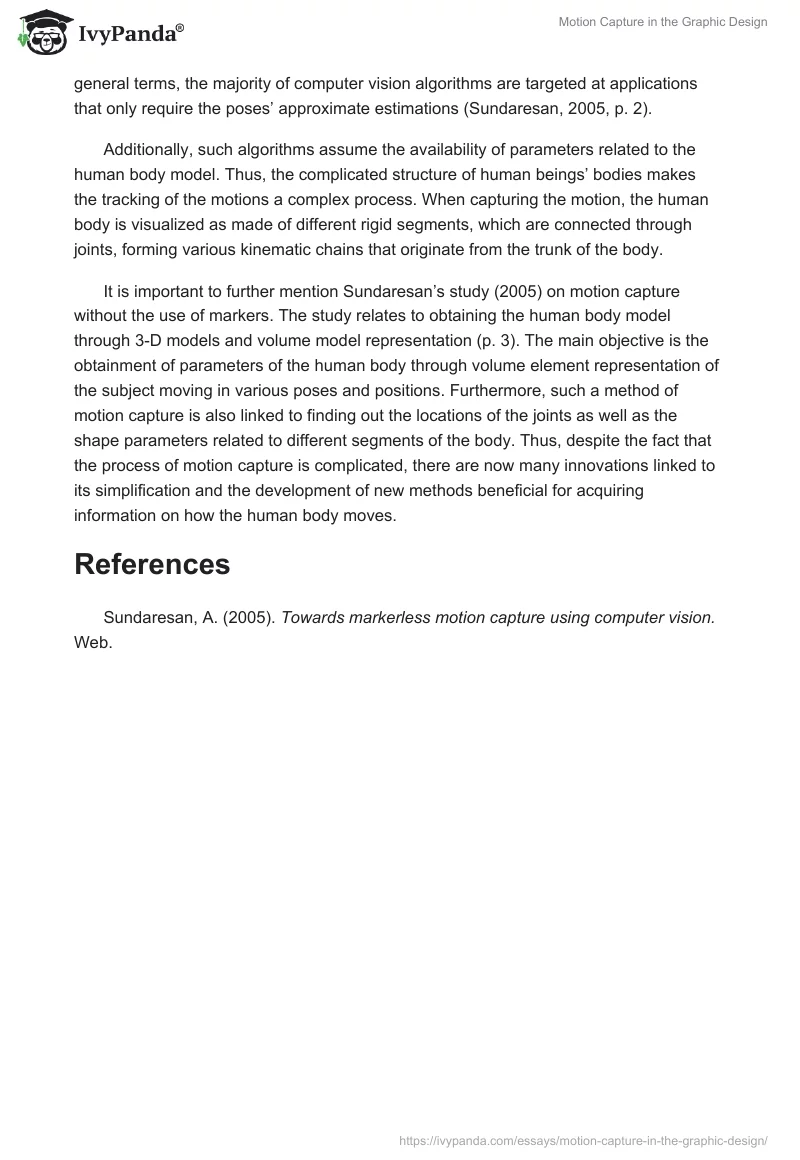The history of motion capture dates back to the second half of the nineteenth century when Eadweard Muybridge introduced it in his “Animal Locomotion” study that examined the way in which birds moved. In its definition, motion capture relates to the analysis and expression of human movements in terms of mathematics. Motion capture found its application in a variety of areas, including human-computer interactions, biomechanics, as well as computer animation. The accomplishment of motion capture can occur with the use of optical, electro-mechanical, or magnetic technologies.
While nowadays methods of motion capture consist of the use of cumbersome passive markers worn by the subjects, the previous methods of motion capture were even more complicated. On the other hand, the study conducted by Sundaresan (2005) offers an innovative way of motion capture that does not entail the use of markers; instead, the pose of the subject is estimated through the use of cameras installed around the subject (p. 1). Muybridge’s study that introduced motion capture consisted of recordings taken from multiple cameras which took subjects’ photographs in order to present visualized material on how movement occurs.
The experiment was conducted in an open shed equipped with three batteries consisting of twelve cameras positioned at different angles. Each battery of cameras took one photo simultaneously, making three photos overall per one shot. Etienne-Jules Marey also explored the principle of motion capture – he used one camera in order to record images used to then make mathematical measurements.
Sports medicine, medical studies, cinema, and video games animation, human-computer interactions have all included the use of human body pose estimation. The task of making estimations using a great number of algorithms is quite complicated and ambiguous. What also adds to the complication of the process is the image segmentation into multiple body parts, which are under the possibility of being self-occluding.
However, without the analysis of different human body types, this process is impossible. Therefore, there is a high need for the use of a number of different cameras that will be beneficial for dealing with kinematic singularities as well as occlusion. In general terms, the majority of computer vision algorithms are targeted at applications that only require the poses’ approximate estimations (Sundaresan, 2005, p. 2).
Additionally, such algorithms assume the availability of parameters related to the human body model. Thus, the complicated structure of human beings’ bodies makes the tracking of the motions a complex process. When capturing the motion, the human body is visualized as made of different rigid segments, which are connected through joints, forming various kinematic chains that originate from the trunk of the body.
It is important to further mention Sundaresan’s study (2005) on motion capture without the use of markers. The study relates to obtaining the human body model through 3-D models and volume model representation (p. 3). The main objective is the obtainment of parameters of the human body through volume element representation of the subject moving in various poses and positions. Furthermore, such a method of motion capture is also linked to finding out the locations of the joints as well as the shape parameters related to different segments of the body. Thus, despite the fact that the process of motion capture is complicated, there are now many innovations linked to its simplification and the development of new methods beneficial for acquiring information on how the human body moves.
References
Sundaresan, A. (2005). Towards markerless motion capture using computer vision. Web.


